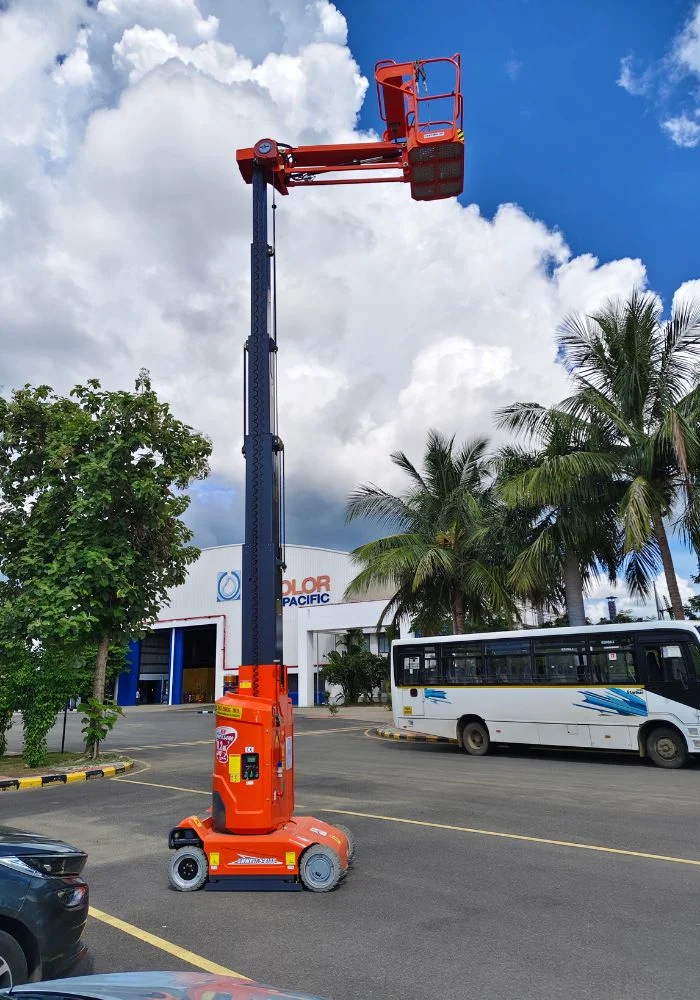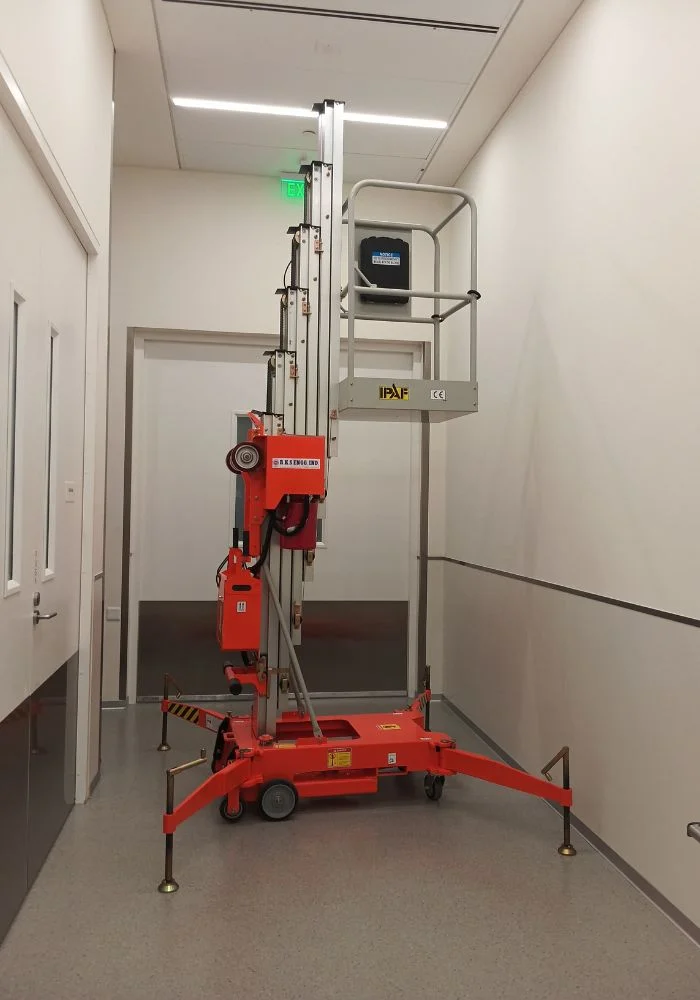Today, the demand for the fastest deliveries is on the rise. This has led to constant pressure on warehousing to manage inventory accurately and speed up the processes to cater to the market demand within the timeline.
However, with the traditional method, it becomes challenging for warehousing industries to keep up with the current supply chain demand. This is where Vertical Lifts come in. These modern machines are designed to streamline warehousing operations with time efficiency and accuracy.
In this guide, you will understand vertical lifting platforms, their key benefits, use cases, and much more. Let’s move forward!
What is Vertical Lifting Equipment?
Vertical lifts are advanced, compact-sized equipment designed for tight spaces like warehouses, construction, supermarkets, and logistics, where inventory management is a tricky and time-consuming task.
Equipped with an outrigger leveling system with a limit switch, an anti-collision wheel, and a spacious platform, the system allows workers to reach shelves at various heights to manage inventory.
Using these vertical lifting solutions, operators can also optimize inventory data management and storage locations to streamline the process for faster and accurate retrievals. This helps them reduce the need for external support, save time, and reduce several operational costs.

Key Benefits of Vertical Lifting Systems in Warehousing
Using ergonomic vertical storage solutions, many industries like ecommerce, manufacturing, healthcare, and pharmaceuticals gain several benefits in their operations. Here we have described how warehouse vertical lifts are a good option for operational performance.
- Maximized Space Utilization
One of the great advantages of choosing a vertical lifting solution is optimizing space organization. Compared to the traditional method of storing inventory, where materials are kept on racks & shelves requires a larger amount of space.
Vertical lifting equipment allows workers to utilize the space efficiently to manage inventory by accessing vertical heights. By adding more shelves on top, organizations can reduce the need for more space, with the ease of retrieving items from the shelves at height.
- Reduce Search Time & Enhance Productivity
In the traditional method of handling inventory storage, workers walk through aisles to find the items and manually handle the inventory. This process takes a lot of time, but still has chances of errors.
On the other hand, the vertical lifting system approach helps workers move fast and track the shelves where items are kept. This reduces the time for searching items and boosts productivity with faster order fulfillment.
- Enhancing Inventory Accuracy and Security
When it comes to managing inventory, accuracy & security are important components, as mismanagement of inventory can lead to costly breakdowns. With vertical lift systems, workers can hold the items for a longer time in an elevated position and keep the inventory in an organized manner. Through an overview of items at height, workers can also track times easily to ensure error-free and precise picking.
In a traditional open rack, inventory is often mixed and misplaced due to limited accessibility at height and the difficulty of handling heavy items. A vertical mast lift allows for excess height reach, ensuring only dedicated personnel have access to specific items with safety.
- Increased Worker Safety
In the conventional method, workers lift heavy items, climb on the ladders, and give them to their coworkers to keep on the shelves manually. During the process, there is a higher risk of strains and accidents.
While vertical height access solutions allow workers to keep the items on the tray equipped with the machine and keep them on the rack at height without the need for a ladder. This ensures the safety of workers as well as enhances productivity.
- Reduce Labour Costs
This lift is designed to improve work efficiency without external manual labour support. Traditionally, many workers are dedicated to storing the items on shelves and tracking them. However, due to human errors, operational costs become high and productivity is lower.
Using a vertical lifting system, businesses simplify their process, which requires fewer manual workforce and prevents operational losses by reducing human errors.
Vertical Lifting Systems Vs. Traditional Storage Systems
In today’s competitive world, every industry is adopting vertical lifts to streamline inventory management and performance, while many businesses still rely on traditional shelving solutions. Here we have given a chart showing features comparison between vertical lifting solutions and the traditional shelving method.

| Features | Vertical Lifts | Traditional Shelving |
| Space Efficiency | High (vertical use) | Limited (horizontal use) |
| Labour Dependency | Low | High |
| Inventory Accuracy | High | Moderate |
| Scalability | Easy | Difficult |
| Initial Investment | Higher | Lower |
Conclusion: Why Vertical Lift Is a Smart Investment
Vertical lifting systems offer several benefits to the warehousing industry, such as space optimization, work efficiency, time saving, & high accuracy with safety. These solutions are not only designed to boost performance but also ensure future proof warehousing operations.
If you want to stay ahead of your competitors, then evaluate your current needs in the environment. Invest in the right vertical lifting equipment and streamline inventory management for growth.
Dingli India is a trusted supplier of vertical lifts, offering a wide range of models, including:
We don’t just sell—we guide you to choose the right equipment for your specific application. Get in touch today and make a smart investment in warehouse efficiency.
